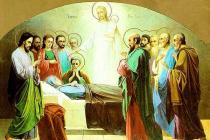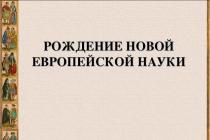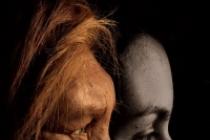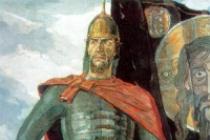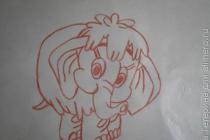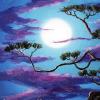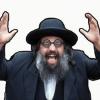




















1 of 21
Presentation on the topic:
Slide no. 1

Slide description:
Slide no. 2

Slide description:
characterize the scientific achievements of the 16th-17th centuries; determine the main directions of scientific thought in Europe in the 16th-17th centuries. understanding of the unlimited possibilities of human intelligence in revealing the secrets of nature and man; understanding the need for willpower and perseverance to achieve success in a set goal LESSON GOALS PROBLEM
Slide no. 3

Slide description:
1. New steps in understanding the secrets of nature. 2. The Universe through the eyes of N. Copernicus, D. Bruno, G. Galileo. 3. I. Newton’s contribution to the creation of a new picture of the world. 4. F. Bacon and R. Descartes - the founders of science and philosophy of the New Age. 5. J. Locke on the human right to life, liberty and property. LESSON PLAN:
Slide no. 4

Slide description:
Features of the New Time: 1) increased human interest in the world around us; 2) Expanding knowledge about the boundaries of the world as a result of geographical discoveries; 3) confirmation of the sphericity of the Earth; 4) growth of cities 5) development of manufacturing production and the world market. THE BIRTH OF A NEW SCIENCE BASED ON EXPERIMENTAL KNOWLEDGE
Slide no. 5

Slide description:
Copernicus N. Polish astronomer, creator of the heliocentric system of the world. He made a revolution in natural science, abandoning the doctrine of the central position of the Earth, accepted for many centuries. He explained the visible movements of the celestial bodies by the rotation of the Earth around its axis and the revolution of the planets (including the Earth) around the Sun. He outlined his teaching in the essay “On the Revolutions of the Heavenly Spheres” (1543), which was banned by the Catholic Church from 1616 to 1828. “He undermined the foundation of faith” NICHOLAS COPERNIUS (1473-1543)
Slide no. 6

Slide description:
“...The earth is spherical because it gravitates towards its center from all sides. Nevertheless, its perfect roundness is not immediately noticeable due to the great height of its mountains and the depth of its valleys, which, however, does not at all distort its roundness as a whole...” From the treatise of Nicolaus Copernicus “On the Rotation of the Heavenly Bodies” (1543) “He undermined the foundation of faith" NICHOLAS COPERNIUS Copernicus in the observatory on the south tower of the Frombork monastery
Slide no. 7

Slide description:
"The enemy of every law, of every faith." GIORDANO BRUNO The ideas of Copernicus were continued by Giordano Bruno. He believed that the Universe is infinite and that it has no center. There are many stars, therefore, many worlds. Also, according to Bruno, faith is incompatible with reason and can only be characteristic of ignorant people. Bruno's views were considered heretical. After decades of wandering, he was captured by the Inquisition and burned at the stake. (1548-1600).
Slide no. 8

Slide description:
: “...I believe that this world and worlds are both born and destroyed. And this world, that is, the globe, had a beginning and may have an end, like other luminaries, which are the same worlds as this world, perhaps better or worse; they are the same luminaries as this world. They are all born and die, like living beings consisting of opposite principles.” From the transcripts of the trial of Giordano Bruno, "Enemy of every law, every faith." GIORDANO BRUNO Monument to Giordano Bruno in Rome at the site of his execution collection of worlds
Slide no. 9

Slide description:
“A man of extraordinary will, intelligence and courage...”. GALILEO GALILEO 1564- 1642 He was the first to use a telescope to observe celestial bodies and made a number of outstanding astronomical works - Italian physicist, mechanic, astronomer, philosopher and mathematician, who had a significant influence on the science of his time. discoveries. Galileo is the founder of experimental physics. With his experiments, he convincingly refuted the speculative metaphysics of Aristotle and laid the foundation of classical mechanics. During his lifetime, he was known as an active supporter of the heliocentric system of the world
Slide no. 10

Slide description:
Joseph-Nicolas Robert-Fleury Galileo before the Inquisition. “A man of extraordinary will, intelligence and courage...”. GALILEO GALILIE “Before us appears a man of extraordinary will, intelligence and courage, capable, as a representative of rational thinking, to withstand those who, relying on the ignorance of the people and the idleness of teachers in church vestments and university robes, are trying to strengthen and defend their position.” Albert Einstein
Slide no. 11

Slide description:
“Completed the creation of a scientific picture of the world.” ISAAC NEWTON, he expounded the law of universal gravitation and three - English physicist, mathematician, mechanic and astronomer, one of the creators of classical physics. The author of the fundamental work “Mathematical Principles of Natural Philosophy”, in which the laws of mechanics. Isaac Newton built a reflecting telescope and discovered new methods of mathematical calculations. His biggest discovery was that, based on the laws of mechanics he developed, he built a new model of the interaction of celestial bodies. 1643 -1727
Slide no. 12

Slide description:
“In philosophy there can be no sovereign except truth. We must erect gold monuments to Kepler, Galileo, Descartes, and on each write Plato is a friend, Aristotle is a friend, but the main friend is truth.” From the notebooks of I. Newton One of the last portraits of Newton (1712) “Completed the creation of a scientific picture of the world.” ISAAC NEWTON
Slide no. 13

Slide description:
“The best of all proofs is experience” FRANCIS BACON 1561 - 1626 - English philosopher, historian, politician, founder of empiricism, major statesman, creator of modern philosophy. Bacon became widely known as a lawyer-philosopher and defender of the scientific revolution. In the work “New Organon” he proclaimed the goal of science to be nature, proposed a reform of the scientific method - turning to experience and processing it through induction, the basis of which is experiment, armed natural science with research methods, and promoted the idea that true knowledge follows from sensory experience. increasing human power over slide No. 15 
Slide description:
“I think, therefore I exist.” RENEE DESCARTES - the founder of science and philosophy of the New Age, French philosopher, mathematician, mechanic, physicist and physiologist, creator of analytical geometry and modern algebraic symbolism, author of the method of radical doubt in philosophy, mechanism in physics, forerunner of reflexology 1596 -1650 Descartes' philosophy is anthropocentric: in Its center is not the Divine mind, but the human mind. And Descartes suggests studying not the structure of the world, but the process of knowing it.
Slide no. 16

Slide description:
P-L Dumenil. Dispute between Descartes and Queen Christina: “I think, therefore I am.” RENEE DESCARTES “The true greatness of the soul, which gives a man the right to respect himself, lies most of all in his consciousness that there is nothing else that would belong to him by greater right than the control of his own desires.” “It is not enough to have a good mind, the main thing is to use it well. In the greatest souls lies the possibility of both the greatest vices and the greatest virtues” Rene Descartes
Slide no. 17

Slide description:
Enlightenment and theorists of liberalism. His influence 1632 -1704 “Intellectual leader of the 18th century” JOHN LOCKE - British educator and philosopher, representative of empiricism and liberalism. His ideas had a huge impact on the development of political philosophy; recognized as one of the most influential thinkers, reflected in the American Declaration of Independence. He created the theory of natural human rights: the right to life, the right to freedom, the right to property. In his works, the principle of separation of powers was first formulated, according to which the powers of the legislative and executive authorities should be differentiated.
19

Slide description:
TABLE “MAIN SCIENTIFIC IDEAS CONTRIBUTING TO THE DEVELOPMENT OF NEW VIEWS ON THE WORLD AND SOCIETY” Scientists and thinkers Country Main ideas, discoveries Significance Nicolaus Copernicus (1473-1543) Poland Created the doctrine of the rotation of the Earth around the Sun and around its axis Destroyed the old ideas about the motionless Earth being center of the Universe Giordano Bruno (1548-1600) Italy Created the doctrine of the immensity, infinity and eternity of the Universe, which has neither center nor edge Destroyed old ideas about the structure of the Universe, proving that neither the Earth nor the Sun are the centers of the world
Slide no. 20

Slide description:
Galileo Galilei (1564-1642) Italy Using a telescope, he discovered new worlds, observed mountains on the Moon and spots on the Sun. Formulated the laws of falling bodies and other laws of physics. Discoveries made with the help of a telescope confirmed the teachings of Copernicus and contributed to the creation of new ideas about the structure of the Universe. Isaac Newton (1642-1727) England Discovered the law of universal gravitation, the laws of mechanical motion and the propagation of light, new methods of mathematical calculations Completed the creation of a new picture of the world in early modern times. His theory argued that nature obeys precise laws of mechanics
Slide no. 21

Slide description:
Francis Bacon (1561-1626) England Scientifically substantiated new methods for studying natural phenomena - observations and experiments Layed the foundations of a new philosophy, introduced experience and experiment as methods of scientific knowledge René Descartes (1596-1650) France Considered the human mind to be the source of knowledge. The founder of science and philosophy of modern times assigned the mind the main role in scientific research and contributed to the strengthening of new ideas about the world. John Locke (1632 -1704) England Created the theory of natural human rights, formulated the principle of separation of powers Creator of the theory of natural law, in the center of which is man
At the turn of the XVI-XVII centuries. under the influence of the turbulent events of the era, important changes occurred in European science. It developed under the sign of contradictions. On the one hand, Europeans' knowledge of the world expanded, education achieved significant success, and science experienced a real rise. On the other hand, in the flames of religious wars and the atmosphere of religious intolerance, all kinds of superstitions flourished, the most wild manifestation of which was the “witch hunt.”
The focus of the creators of the Renaissance was on man and the humanities. At the turn of the XVI-XVII centuries. interests shifted to a different plane: numerous inventions and improvements provided a huge supply of new knowledge and provided a breakthrough in the development of the natural sciences. A real scientific revolution has begun in this area. The emergence of new developments in the field of natural sciences was dictated by the needs of growing production and practical human activity. Long sea voyages contributed to the success of astronomy. The use of the compass gave impetus to the study of the phenomena of magnetism. The successes of dyeing, metallurgy, and the manufacture of medicines led to the accumulation of new knowledge in chemistry. The need to determine the distance of throwing a shot while firing from a cannon prompted the study of the laws of the fall and movement of bodies.
At the same time, the rise of material production armed scientists with new means and opportunities for scientific work, and prepared an invention at the turn of the 16th-17th centuries. extremely necessary for the development of research on precision instruments. At this time, more advanced watches were made, a microscope, a telescope, a thermometer and other instruments necessary for astronomy and physics appeared. The first big discoveries were made by astronomers.
Since antiquity, Western Europe has been dominated by ideas about the Earth as the center of the Universe. The Moon, Sun and planets revolved around it in a certain sequence. This point of view was fully consistent with Catholic doctrine, so it could only be denied by rebelling against the authority of the church. The Polish scientist was the first to take this bold step. Nicolaus Copernicus(1473-1543). He expressed the idea that the Earth, together with the planets, revolves around the stationary Sun. Copernicus substantiated his theory in his work “On the Rotation of the Celestial Spheres.” Fearing the Inquisition, the astronomer did not dare to publish his treatise for many years and saw the first printed copy only on the day of his death.
The discovery of Copernicus found further substantiation in the research of the German Johannes Kepler(1571-1630). While studying to become a theologian, the gifted young man soon became interested in the exact sciences. He carried out mathematical processing of astronomical data and not only confirmed, but also further developed the theory of Copernicus. In 1627, Kepler compiled tables of the motion of the planets around the Sun. He suggested that the planet's orbit is not a circle, but an ellipse. The significance of the scientist’s activity is evidenced by the fact that the laws of planetary motion he discovered are still called “Kepler’s laws” today.
| Jan Vermeer. Astronomer. 1668 |
History has brought to us the story that at the beginning of the 17th century. In the small Dutch city of Middelburg there lived a master, Hans Lippershey, who made and sold glasses. One day his children were playing in the shop and decided to look through two pieces of glass at the beautiful cockerel on the spire of the cathedral belfry. To the greatest surprise, the cockerel increased in size. The boys told their father about this, and he found out that one glass was convex and the other was concave. He attached them to the ends of two tubes and placed them inside each other. This is how the first telescope was created. As often happens with brilliant discoveries, several other people made similar pipes almost simultaneously with the Dutch master. The glass in them was ground in the shape of a lentil grain. In German, lentils sound “linze”, hence the name “lens”.
At first, no one imagined using telescopes for scientific research. Only great Galileo Galilei(1564-1642), having constructed a telescope with a magnification of 32 times, directed it into the starry sky. The scientist discovered new stars and saw mountains on the Moon, and left the first sketches of the lunar surface. He discovered spots on the Sun, and also confirmed that the Earth, like other planets and the Sun, rotates around its axis. For this statement, the Inquisition took up arms against Galileo. Fleeing from burning, he was forced to publicly renounce his beliefs, although he did not stop doubting their correctness. According to legend, leaving the courtroom, the great scientist quietly but firmly said: “And yet she is spinning!”
An Italian Franciscan monk became a strong supporter of the teachings of Copernicus Giordano Bruno(1548-1600). He went further than his predecessor and, unlike Copernicus, believed that the Universe is not limited to the Solar system alone. Bruno expressed the idea of the infinity of the Universe and the existence of many worlds in it, including inhabited ones. These views were too divergent from church teaching and became the basis for accusations of heresy. Eight years in prison, interrogations and torture by inquisitors did not break Bruno and did not force him to renounce his views. A man of amazing education, one of the most original thinkers of the 16th century,
Giordano Bruno was burned in Rome. He remained true to his words: “Whoever is captured by the greatness of his work does not feel the fear of death.”
Brutal reprisals could not stop the development of new science and the search by scientists from different European countries for new ways of understanding the world. English philosopher Francis Bacon(1561-1626) was confident that in his work a scientist should rely on the results of long-term observations. Only repeated experiments can provide grounds for generalizing conclusions; only experience forms the basis of scientific knowledge, is the only source of truth and its only confirmation. Bacon's belief that science should give man power over nature and improve life was expressed in his catchphrase “Knowledge is power.”
The versatility of Bacon's interests is simply amazing: he was a politician and statesman, lawyer and diplomat, historian and writer. The philosopher described the world transformed by omnipotent science in his utopian novel “New Atlantis,” where he depicted a fascinating picture of life in an ideal state. All power in it is concentrated in the hands of a perfect government called the “House of Solomon.” It includes only scientists; thanks to their achievements, a wonderful future opens up for the country, and its inhabitants will enjoy universal prosperity.
XVII century From "The New Atlantis" by Francis Bacon. Read not to deny and refute, not to accept on faith, and not to find a subject for conversation, but to think and reflect... I am just a trumpeter and do not take part in the battle.. Our trumpet calls people not to mutual strife or battles, but, on the contrary, to ensure that they, having concluded peace among themselves, join forces to fight nature, storm its impregnable fortifications and push the limits of human power. Material from the site
Unlike Bacon, the outstanding French philosopher and mathematician Rene Descartes(1596-1650) assigned experience a secondary role. He considered reason to be the source of true knowledge. The philosopher captured his boundless faith in the great mind in the words: “I think, therefore I exist.” Descartes' teaching - Cartesianism (from his Latinized name - Cartesius) - found numerous adherents and followers. It laid the foundations of rationalism of the 17th century. — the conviction that the measure of truth is reason.
The development of scientific thought and the needs of the natural sciences contributed to the rapid development of mathematics. Discoveries in it were made one after another: logarithms were invented, letters and signs of addition and subtraction, equalities, parentheses and others began to be used. From now on, clear algebraic formulas came into use, which greatly facilitated complex calculations.
The beginning of a new era in the development of mathematics and physics is associated with the name of the outstanding English scientist Isaac Newton(1643-1727). He studied the nature of light, the movement of planets in orbit, and the principles of interaction of physical bodies. In each of these areas, Newton made brilliant discoveries, which allowed him to formulate the law of universal gravitation and make a huge contribution to the creation of a scientific picture of the world.
The German scientist had a colossal influence on European scientific thought Gottfried Leibniz(1646-1716). A man of exceptional talent, he defended the idea of the unity of knowledge and achieved considerable results in various fields of science - law, history, linguistics, geology, physics and others. The scientist argued that the world is built on the basis of precise mathematical calculations and consists of small living particles - monads. Their different combinations create an endless variety of world, in which all elements are closely interconnected. One of Leibniz's inventions is the adding machine. It performed all arithmetic operations and aroused great interest and high praise in Europe at that time.
Questions about this material:
-
7th grade, lesson No. 11
Theme: “The Birth of a New European Science”
Pedagogical goals:
promote familiarization with the conditions for the development of science during the Renaissance;
contribute to the formation of ideas about the main discoveries that determined the new picture of the world,
create conditions for the development of UUD:
Reproductive level : name the names of representatives of European science and their discoveries.
Productive level : based on additional historical and literary sources, prepare a report on the activities of representatives of European science, be able to work with tables.
Type and type of lesson: combined
Main content of the topic . Conditions for the development of a revolution in natural science. The operation of the principle of authority in medieval Europe and its manifestation. A critical view of humanists on the world around us and its consequences. Discoveries that determined a new picture of the world. The life and scientific discovery of Nicolaus Copernicus. Discovery and feat in the name of science Giordano Bruno. Galileo Galilei and his discoveries. Isaac Newton's contribution to the creation of a new picture of the world in the 17th century. Francis Bacon on the importance of experience in the knowledge of nature. Rene Descartes on the role of scientific research. Francis Bacon and Rene Descartes are the founders of modern philosophy. The influence of scientific discoveries of the New Age on technological progress and human self-awareness.
Basic concepts: the infinity of the Universe, a new picture of the world, natural human rights.
Main questions : views and discoveries of N. Copernicus, J. Bruno, I. Newton. Philosophers: F. Bacon, R. Descartes, J. Locke.
Planned results of studying the material: students realize that in the XVI-XVII centuries. There is a rapid development of science, primarily in the field of mathematics and natural science, and on this basis a new understanding of the Universe is emerging. Ideas arise about the human right to freedom, happiness, development and manifestation of one’s abilities, to a decent spiritual and physical existence.
Educational Resources: 1) textbook Yudovskaya A.Ya. General history. Modern history, 1500-1800. 7th grade: educational. for general education organizations / A.Ya. Yudovskaya, P.A. Baranov, L.M. Vanyushkina; edited by A.A.Iskanderova. - 2nd ed. - M.: Education, 2014.
2) Yudovskaya A.Ya. General history. Modern history, 1500-1800. Lesson-based developments. 7th grade: a manual for teachers of general education. organizations / A.Ya. Yudovskaya, L.M. Vanyushkina; M.: Education, 2013.
Visibility, TSO: wall maps, reproductions of paintings, educational films, computer, media projector.
Plan
Org. moment.
Updating students' knowledge.
Learning new material
During the classes
I. Org. moment.
II. Updating students' knowledge.
Working with cards (Appendix 1), answers to textbook questions, p. 4. 86
III. Learning new material.
1) The birth of science based on experimental knowledge.
Heuristic conversation with students on the following questions: 1. What changes in people’s views can we trace toXVIV?
2. How do you understand the Renaissance principle of empiricism? What is its practical significance and application?
2) “He undermined the foundation of faith.”
3) “The enemy of all law, all faith.”
4) “A man of extraordinary will, intelligence, and courage!”
5) He completed the creation of a new picture of the world.
6) “The best proof is experience...”.
7) “I think, therefore I exist.”
It is advisable to carry out paragraphs 2-7 of the lesson as work in groups. UThe teacher talks about the birth of a new science, then introduces students to the problems posed and invites each group to study one of the plots of the new material and solve the problems posed on its basis. An approximate distribution of content for independent work in groups might look like this:
Group I: new knowledge about the Universe (sections § 10: “He undermined the foundation of faith”, “The enemy of every law, every faith”);
Group II: new knowledge about the Universe and the laws of nature (sections § 10: “A man of extraordinary will and courage”, “He completed the creation of a new picture of the world”);
Group III: new knowledge about man (sections § 10: “Blood spreads warmth and life everywhere”, “Right to life, freedom and creativity”);
Group IV: new information about the capabilities of the human mind (sections § 10: “The best of all proofs is experience”, “I think, therefore I exist...”).
These tasks, written in advance on cards, are distributed to groups. The teacher comments on them and sets time for independent work and discussion in groups. The second part of the lesson is for students to independently familiarize themselves with the text of the textbook and find a solution to the problem with a discussion of the final version within the group. In the third part of the lesson, representatives from each group present the results of their collective work. Presentation of the results of the groups’ activities may be accompanied by filling out the table “Main scientific ideas that contributed to the development of new views on the world and society.”
An example of filling out the table:
Scientists and thinkers
A country
Main ideas, discoveries
Influence on the formation of views
Nicolaus Copernicus (1473-1543)
Poland
Created the doctrine of the rotation of the Earth around the Sun and around its axis
Destroyed the old ideas about the motionless Earth being the center of the Universe
Giordano Bruno (1548-1600)
Italy
Created the doctrine of the immensity, infinity and eternity of the Universe, which has neither center nor edge
Destroyed old ideas about the structure of the Universe, proving that neither the Earth nor the Sun are the centers of the world
Galileo Galilei (1564-1642)
Italy
With the help of a telescope, he discovered new worlds, observed mountains on the Moon and spots on the Sun. Formulated the laws of falling bodies and other laws of physics
Discoveries made with the help of a telescope confirmed the teachings of Copernicus and contributed to the creation of new ideas for people about the structure of the Universe
Isaac Newton (1642-1727)
England
Discovered the law of universal gravitation, laws of mechanical motion and propagation of light, new methods of mathematical calculations
Completed the creation of a new picture of the world in the early modern era. His theory argued that nature obeys precise laws of mechanics
William Harvey (1578-1657)
England
He discovered the secret of blood circulation and showed the role of the heart in this process. Created a theory about the origin of life
Harvey's discoveries gave people scientific ideas about blood circulation and the origin of life.
Francis Bacon (1561-1626)
England
Scientifically substantiated new methods for studying natural phenomena - observations and experiments
Laid the foundations of a new philosophy, introduced experience and experiment as methods of scientific knowledge
René Descartes (1596-1650)
France
He considered the human mind to be the source of knowledge. Gave reason a major role in scientific research
Founder of science and philosophy of the New Age. Defending the principles of the infinity of the Universe, he contributed to the strengthening of new ideas about the world. He believed that science should bring practical benefits to people. His teaching on the role of reason in knowledge elevated man
IV. Consolidation
Seventh graders discuss the problems posed at the beginning of the lesson.
Annex 1
1. Explain the terms:
7th grade Topic “The world of artistic culture of the Renaissance” Card No. 1
1. Explain the terms: empiricism, humanism, antiquity
2. Correct historical errors and inaccuracies in the text.
William Shakespeare was born into a noble family in Italy, and showed his talent as an artist early on: he created paintings: “Mona Lisa”, “Hamlet and Juliet”, and wrote sonnets.
1. Explain the terms:
7th grade Topic “The world of artistic culture of the Renaissance” Card No. 2
1. Explain the terms: empiricism, humanism, antiquity.
2. Correct historical errors and inaccuracies in the text.
Leonardo da Vinci was born into a wealthy artist family and lived all his life in Holland, where he painted his most famous paintings “Night Watch” and “David”.
1. Match:
1. Leonardo da Vinci
2. Michelangelo
B) "Utopia"
3. William Shakespeare
4. Rafael Santi
5. Thomas More
XV- XVI
7th grade Topic “The world of artistic culture of the Renaissance” Card No. 3
1. Match:
1. Leonardo da Vinci
A) “David”, “Sistine Chapel”
2. Michelangelo
B) "Utopia"
3. William Shakespeare
B) “La Gioconda”, “Last Supper”
4. Rafael Santi
D) “Romeo and Juliet”, sonnets
5. Thomas More
D) “Sistine Madonna”, “Conestabile Madonna”
2. How can we explain the fact that during the periodXV- XVIcenturies Europe is going through a Renaissance period, how did this manifest itself?
7th grade Topic “The world of artistic culture of the Renaissance” Card No. 3
1. Match:
1. Leonardo da Vinci
A) “David”, “Sistine Chapel”
2. Michelangelo
B) "Utopia"
3. William Shakespeare
B) “La Gioconda”, “Last Supper”
4. Rafael Santi
D) “Romeo and Juliet”, sonnets
5. Thomas More
D) “Sistine Madonna”, “Conestabile Madonna”
2. How can we explain the fact that during the periodXV- XVIcenturies Europe is going through a Renaissance period, how did this manifest itself?
7th grade Topic “The world of artistic culture of the Renaissance” Card No. 3
1. Match:
1. Leonardo da Vinci
A) “David”, “Sistine Chapel”
2. Michelangelo
B) "Utopia"
3. William Shakespeare
B) “La Gioconda”, “Last Supper”
4. Rafael Santi
D) “Romeo and Juliet”, sonnets
5. Thomas More
D) “Sistine Madonna”, “Conestabile Madonna”
2. How can we explain the fact that during the periodXV- XVIcenturies Europe is going through a Renaissance period, how did this manifest itself?
THE BIRTH OF A NEW EUROPEAN SCIENCE
Prepared by a history and social studies teacher at Federal State Educational Institution Secondary School No. 4 of the Ministry of Defense of the Russian Federation
Latypova O.Sh.characterize the scientific achievements of the XVI-
XVII centuries; determine the main directions of scientific thought in Europe in the 16th-17th centuries.
understanding of the unlimited possibilities of human intelligence in revealing the secrets of nature and man; understanding the need for willpower and perseverance to achieve success in your goal LESSON GOALSPROBLEM
1. New steps in understanding the secrets of nature.
2. The Universe through the eyes of N. Copernicus, D. Bruno, G. Galileo.
3. I. Newton’s contribution to the creation of a new picture of the world.
4. F. Bacon and R. Descartes - the founders of science and philosophy of the New Age.
5. J. Locke on the human right to life, liberty and property. LESSON PLAN:Features of the New Time
1) strengthening a person’s interest in the world around him;
2) Expanding knowledge about the boundaries of the world as a result of geographical discoveries
3) confirmation of the sphericity of the Earth;
4) urban growth
5) development of manufacturing production and the world market. THE BIRTH OF A NEW SCIENCE BASED ON EXPERIMENTAL KNOWLEDGECopernicus N. Polish astronomer, creator of the heliocentric system of the world. He made a revolution in natural science, abandoning the doctrine of the central position of the Earth, accepted for many centuries. He explained the visible movements of the celestial bodies by the rotation of the Earth around its axis and the revolution of the planets (including the Earth) around the Sun. He outlined his teaching in the work “On the Revolutions of the Heavenly Spheres” (1543), which was banned by the Catholic Church from 1616 to 1828.
“He undermined the foundation of faith” NICHOLAS COPERNIUS
“...The earth is spherical,
because it gravitates towards its center from all sides. However, its perfect roundness is not immediately noticeable.
due to the great height of its mountains and the depth of its valleys, which, however, does not at all distort its roundness as a whole..."
From the treatise of Nicolaus Copernicus “On the Rotation of the Heavenly Bodies” (1543) “He undermined the foundation of faith”
NICHOLAS COPERNIUSCopernicus in the observatory on the south tower of Frombork Monastery
"The enemy of every law, of every faith." GIORDANO BRUNO
Copernicus' ideas were continued by Giordano Bruno. He believed that the Universe was infinite and that it had no center. Eat
many stars, therefore many worlds. Also, according to Bruno, faith is incompatible with reason and can only be characteristic of ignorant people. Bruno's views were considered heretical. After decades of wandering, he was captured by the Inquisition and burned at the stake.: “...I believe that this world and worlds, and
are born and destroyed. AND
this world, that is, the globe,
had a beginning and may have
the end, like other luminaries,
which are the same
worlds, like this world,
perhaps the best or
the worst; they are the same
luminaries, like this world. All
they are born and die like
living beings consisting of opposite principles."
From court records
trial of Giordano Bruno “Enemy of all law, all faith.” GIORDANO BRUNOMonument to Giordano Bruno in Rome at the site of his execution
collection of worlds
“A man of extraordinary will, intelligence and courage...”. GALILEO GALILEI
He was the first to use a telescope to observe celestial bodies and made a number of outstanding astronomical
Italian physicist, mechanic, astronomer, philosopher and mathematician, who had a significant influence on the science of his time.
discoveries. Galileo is the founder of experimental physics. With his experiments, he convincingly refuted Aristotle's speculative metaphysics and laid the foundation of classical mechanics
During his lifetime he was known as an active supporter of the heliocentric system of the worldSlide No. 10
Joseph-Nicolas Robert-Fleury
Galileo before the court of the Inquisition. “A man of extraordinary will, intelligence and courage...”. GALILEO GALILEI“Before us appears a man of extraordinary will, intelligence and courage, capable, as a representative of rational thinking, to stand against those who, relying on the ignorance of the people and the idleness of teachers in church vestments
and university robes, trying to strengthen and defend his position." Albert Einstein
Slide No. 11
he stated the law of universal gravitation and three
English physicist, mathematician, mechanic and astronomer, one of the founders of classical physics. The author of the fundamental work “Mathematical Principles of Natural Philosophy”, in which
law of mechanics.
Isaac Newton built a reflecting telescope and discovered new
methods of mathematical calculations. His biggest discovery was that, based on the laws of mechanics he developed, he built a new model of the interaction of celestial bodies.Slide No. 12
“In philosophy there can be no sovereign except truth. We must erect gold monuments to Kepler, Galileo, Descartes, and on each write Plato is a friend, Aristotle is a friend, but the main friend is truth.”
From the notebooks of I. NewtonOne of the last portraits of Newton (1712)“Completed the creation of a scientific picture of the world.” ISAAC NEWTON
Slide No. 13
“The best proof of all is experience” FRANCIS BACON
English philosopher, historian, politician, founder of empiricism, major statesman, creator of modern philosophy. Bacon became widely known as a lawyer-philosopher and defender of the scientific revolution. In his work “New Organon” he proclaimed the goal of science
nature, proposed a reform of the scientific method - turning to experience and processing it through induction, the basis of which is experiment, armed natural science with research methods, and promoted the idea that true knowledge follows from sensory experience.
increase in human power over
Slide No. 14
“Knowledge and human power coincide, for ignorance of the cause makes action difficult. The best proof of all is experience..."
"The bee...extracts material from
garden and wild flowers, but
arranges and changes it according to
to your skill. So it follows
place good hope in
closer and more indestructible (which has not happened before)
the union of these abilities -
experience and reason"
Francis Bacon “The best of all proofs is experience” FRANCIS BACONStatue of Bacon in Trinity College Chapel
Slide No. 15
RENEE DESCARTES - founder of science and philosophy of modern times, French philosopher, mathematician, mechanic, physicist and physiologist, creator of analytical geometry and modern algebraic symbolism, author of the method of radical doubt in philosophy, mechanism in physics, forerunner of reflexologyDescartes' philosophy is anthropocentric: at its center is not the Divine mind, but the human mind. And Descartes suggests
study not the structure of the world, but the process of knowing it.Slide No. 16
P-L Dumenil. Dispute between Descartes and Queen Christina
“I think, therefore I exist.”
RENE DESCARTES“The true greatness of the soul, which gives a man the right to respect himself, lies most of all in his consciousness that there is nothing else that would belong to him by greater right than the control of his own desires.”
“It is not enough to have a good mind,
the main thing is to use it well
In the greatest souls
there is an opportunity to
major vices, and
greatest virtues"
Rene DescartesSlide No. 17
Enlightenment and theorists of liberalism. His influence
"Intellectual leader of the 18th century"
JOHN LOCKEBritish educator and philosopher, representative of empiricism and liberalism. His ideas had a huge influence on the development of political philosophy and is recognized as one of the most influential thinkers.
reflected in the American Declaration of Independence. He created the theory of natural human rights: the right to life, the right to freedom, the right to property. In his works, the principle of separation of powers was first formulated, according to which it was necessary to differentiate powers
legislative and executive authorities.Slide No. 18
Before his death, Locke composed the following inscription for his monument: “Halt, traveler. Here lies John Locke. If you ask what kind of person he was, then I will answer you that he served only the truth. Learn this from his writings, which will tell you more accurately what remains of him than dubious praises and epitaphs. If he had some virtues, they were not so great that they could serve as an example for you.”
J. LockeG. Kneller. John Locke."Intellectual leader of the 18th century"
JOHN LOCKE1. The birthplace of the Renaissance was:
6. “Madonna Litta”, “Gioconda” belong to the brush:
1. England
2. Spain
3. Germany
4. Italy.
2. Humanists are...
1. Residents of big cities
2. Servants of the Catholic Church
3. People-loving
4. Manufactory owners
3. Which of the following provisions forms the basis of the views of humanists:
1. a person’s faith in his capabilities
2. conviction in the value of the afterlife over earthly life
3. rejection of the joys and pleasures of worldly life
4. denial of a person’s ability to change his destiny
4. Which of the representatives of humanists was the author of the novel “Gargantua and Pantagruel”
1. Erasmus of Rotterdam
2. Thomas More
3. Francois Rabelais
4. William Shakespeare
5. Miguel Cervantos owns the work:
1. Hamlet
2. Don Quixote
3. "Utopia Island"
4. "In Praise of Stupidity"
1. Rafael Santi
2. Leonardo da Vinci
3. Michelangelo Buonarotti
4. Pieter Bruegel the Elder
7. “Portrait of an Old Man in Red”, dedicated to the tragic story of a difficult life lived by
brushes:
1. Rembrandt
2. Diego Velazquez
3. Rafael Santi
4. Albrecht Durer
8. Based on the description, determine the name of the painting: “The artist placed the figure of a woman in the center against a background of soft
outlines of low hills around the lake. Madonna's barely noticeable tilt of her head emphasizes her love for
son."
1. "Sistine Madonna"
2. "Gioconda"
3. "Madonna Conestabile"
4. "Madonna Litta"
9. Pieter Bruegel the Elder, who depicted commoners and folk scenes, was from:
1. Czech Republic
2. Netherlands
3. Germany
4. Portugal
10. The painting “Four Horsemen”, personifying the terrible disasters of man: Pestilence, War, Famine and Death,
which must destroy part of humanity belongs to:
1. P. Bruegel – the elder
2. R. Santi
3. A. Durer
4. RembrandtLesson topic:
"The birth of a new
European Science" Today in class:
Let's get acquainted with the development of the new
European science;
Let's meet the scientists who contributed
your contribution to the development of science;
Develop the ability to work with a textbookPlan:
The birth of a new science.
2. Nicolaus Copernicus.
3. Giordano Bruno.
4. Galileo Galilei.
5. Isaac Newton.
6. William Harvey
7. Francis Bacon
8. Rene Descartes.
9. John Locke
10. Summing up the lesson
1.
Great
geographical
discoveries
pushed the boundaries
peace, confirmed
Europeans' thoughts about
sphericity
Lands were given new ones
knowledge about living
people there. The birth of a new science based on experimental knowledge
In the era
Middle Ages
European science
respected the principle
authority - for
the truth was accepted
thoughts of the greats
scientists of antiquity.
In the early era
New times
curiosity and
critical
attitude to
reality
forces people
personally observe
natural phenomena.Question:
Problematic question:
What impact did they have?
discoveries of scientists on
formation of views
of people?The birth of a new science based on experimental knowledge
Features of the New Age:
1) a person’s interest in
the surrounding world;
2) as a result of geographical discoveries
the boundaries of the world have expanded
3) the sphericity of the Earth was confirmed;
4) cities are growing
5) development of manufacturing
production and world market.The birth of a new science based on experimental knowledge
During the Middle Ages, European science
observed the principle of authority (for truth
thoughts of antiquity were accepted):
Geography
medicine
physics
Ptolemy
Hippocrates
Archimedes The birth of a new science based on experimental knowledge
Increased curiosity and critical
relationship to reality forces
people to personally observe natural phenomena.
The humanists were the first to take this path,
which were recognized as human
with reason the ability to understand and explain
world.The birth of a new science based on experimental knowledge
The Renaissance gave Europeans
independence of thought, mainly
whose achievement was growing
the belief that humanity can
improve the world in which we live
reliable knowledge. Table "Basic scientific ideas"
Scientists,
thinkers
A country
date
Key Ideas “He undermined the foundation of faith”
Nicolaus Copernicus
(1473-1543)
Great Polish
astronomer. Committed
revolution in science
giving up
existed in
for thousands of years
immobility teachings
Earth.
Watching the heavenly
bodies concluded about
that the earth rotates
around the sun and around
its axis. In 1543
the book was published
About the rotation of the heavens
spheres"
Giordano Bruno
(1548-1600)
Studying the teachings of Copernicus,
has concluded:
1) The Universe does not have
edge, it is immeasurable and
infinite.
2) The Universe does not have
center
3) The Universe is
countless
many stars.
In 1600 in Rome on
Square of Flowers by
by order of the church fathers
howled burned by Giordano
Bruno. "The enemy of all law, of all faith"
"The universe has no edge, it
immeasurable and endless." She does not have
center - neither the Earth nor the Sun
are the centers of the world. Universe -
these are countless stars, and
every star is a distant sun,
around which their people move
planets. The universe exists forever
and cannot disappear. “A man of extraordinary faith, intelligence, courage”
Great scientist, astronomer, physicist,
poet, comedy writer.
Watched the heavenly bodies in
telescope.
He discovered the moons of Jupiter, calling them
their "Medici Stars".
I observed mountains on the moon, spots on
Sun.
1)
2)
3)
Galileo Galilei
(1564-1642)
4)
5)
Discovered new stars;
I observed mountains on the moon and spots on
Sun
Formulated the law of falling bodies,
pendulum movement and other laws
physicists
Wrote a book "Dialogues about two
systems"
His discoveries, made with the help
telescope, confirmed the teaching
Copernicus. “Completed the creation of a scientific picture of the world”
Isaac Newton
(1643-1727)
Created an optical
laboratory, produced
legendary experience of decomposition
light, built in 1641
small mirror
telescope and laws
propagation of light and new
mathematical methods
calculations.
Based on the works of Copernicus
and Galileo, completed the creation
a new picture of the world.
Discovered the law of the universal
gravity, laws
mechanical movement and
spread of light, new
mathematical methods
calculations. "The Secret of Blood Circulation"
English doctor and
scientist, one of
the most educated
his people
time.
Discovered a secret
blood circulation
His discoveries
allowed a lot
learn about the structure
human
body.
William Harvey (1578-1657) “The best proof is experience”
English philosopher
Francis Bacon
(1561-1626)
humanist, creator
new philosophy.
Suggested a new one
study method
natural phenomena –
observations and experiments.
Suggested a new one
study method
nature -
reasoning from
private to general,
based on
experimental
data. "I think, therefore I am"
Considered the founder
science and philosophy of the New
time. I came up with the formula:
man thinks
doubts
scientific knowledge is born.
In the knowledge of the world Descartes
Rene Descartes
(1596-1650)
attached great importance
mathematics, counting it
a model and ideal for everyone
Sci.
He created an analytical
geometry, introduced the concept
variable size,
algebraic notation.
Main role in scientific
research was given to the mind. "All people are equal"
Developed the doctrine of
natural,
birth rights
human: the right to
life, freedom and
own.
Attached great
importance of education
and education,
which enrich
human mind.
John Locke
(1632-1704)Let's summarize the lesson:
X
ABOUT
X
ABOUT
ABOUT
ABOUT
X
ABOUT
XQuestion:
Problematic question:
What impact did they have?
discoveries of scientists on
formation of views
of people?conclusions
Conclusion:
XVI – XVIII centuries – rapid development of science,
especially mathematics and science
A New View of the Universe
New methods of studying nature –
experience (practice) and reason (theory)Group work. Review questions
Group work.
Work in groups.
Questions
for repetition
Questions
to repeat:
Name the features of the new science
What a new view of the universe
appeared in modern times?
Name the scientists thanks to whom
the idea of the Universe has changed.
What new methods of studying nature
were born in the 16th – 18th centuries?
Name the scientists who developed
these methods. Individual work on “Z”:
Establish a correspondence between the author and his
judgment.
Scientist
Judgment
1) Giordano Bruno A) “The best of all
the evidence is experience"
2) Francis Bacon
B) “I think - therefore,
I exist"
3) Rene Descartes
C) “The Universe has no edge, it
immeasurable and endless" Individual work at “4”:
At the trial, Giordano Bruno exclaimed,
addressing the judges: “You are with great
with fear you announce a sentence to me than I
I listen to him!” Who were the judges?
Why did Giordano Bruno believe that they
do you feel afraid? Answer
write it down in your notebook. Individual work at “5”:
Read the document
after § 10 and answer
written in a notebook
questions.Homework:
Paragraph 10
questions after the paragraph,
Learn notes
(table)

